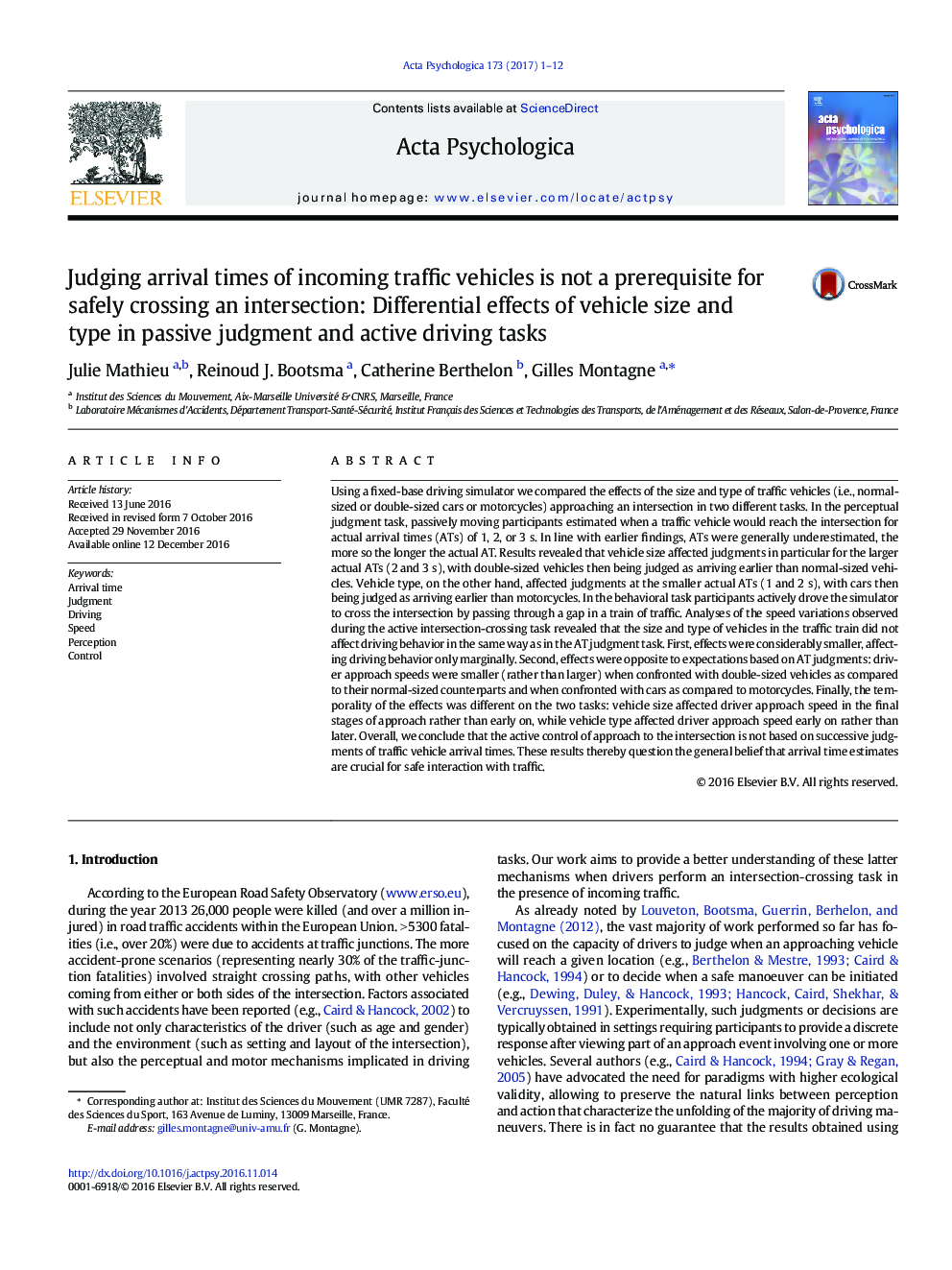| Article ID | Journal | Published Year | Pages | File Type |
|---|---|---|---|---|
| 5040313 | Acta Psychologica | 2017 | 12 Pages |
â¢Participants were confronted with traffic vehicles approaching an intersection.â¢Arrival time judgments were affected by traffic vehicle size and type.â¢Intersection crossing behavior did not reflect biases observed in judgments.â¢Active approach to intersection is not based on arrival time judgments.
Using a fixed-base driving simulator we compared the effects of the size and type of traffic vehicles (i.e., normal-sized or double-sized cars or motorcycles) approaching an intersection in two different tasks. In the perceptual judgment task, passively moving participants estimated when a traffic vehicle would reach the intersection for actual arrival times (ATs) of 1, 2, or 3Â s. In line with earlier findings, ATs were generally underestimated, the more so the longer the actual AT. Results revealed that vehicle size affected judgments in particular for the larger actual ATs (2 and 3Â s), with double-sized vehicles then being judged as arriving earlier than normal-sized vehicles. Vehicle type, on the other hand, affected judgments at the smaller actual ATs (1 and 2Â s), with cars then being judged as arriving earlier than motorcycles. In the behavioral task participants actively drove the simulator to cross the intersection by passing through a gap in a train of traffic. Analyses of the speed variations observed during the active intersection-crossing task revealed that the size and type of vehicles in the traffic train did not affect driving behavior in the same way as in the AT judgment task. First, effects were considerably smaller, affecting driving behavior only marginally. Second, effects were opposite to expectations based on AT judgments: driver approach speeds were smaller (rather than larger) when confronted with double-sized vehicles as compared to their normal-sized counterparts and when confronted with cars as compared to motorcycles. Finally, the temporality of the effects was different on the two tasks: vehicle size affected driver approach speed in the final stages of approach rather than early on, while vehicle type affected driver approach speed early on rather than later. Overall, we conclude that the active control of approach to the intersection is not based on successive judgments of traffic vehicle arrival times. These results thereby question the general belief that arrival time estimates are crucial for safe interaction with traffic.
